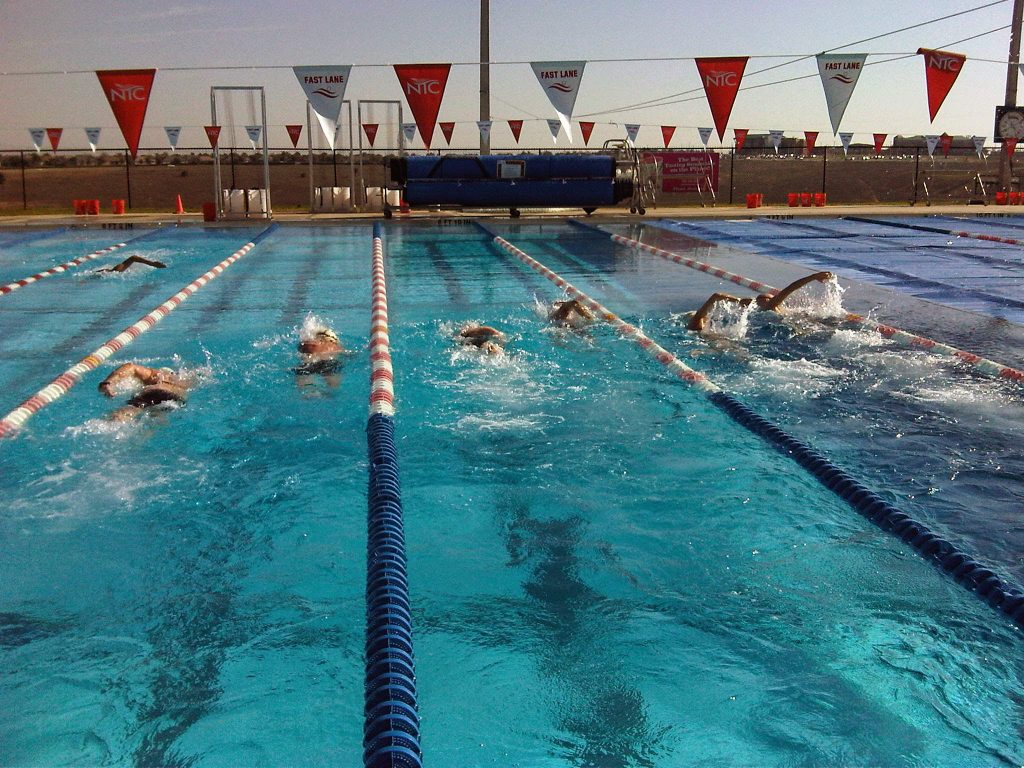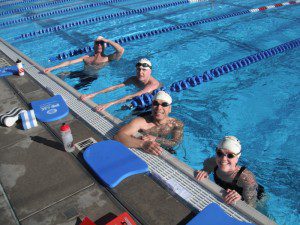Seven Essentials for the Perfect Swim Clinic

Get Schooled in the Swim – 7 Things to Look for in a Swim Clinic
by Nigel Gray
Swim clinics can be a great way to fine-tune your stroke as you get ready for the upcoming season. With so many options out there, though, it’s important that you pick a clinic that offers some essential components that will help your specific needs. Here are seven things to look for:
1. Video Analysis
One of the most important feedback tools from a swim clinic is to be able to get some underwater video. Most athletes think they know how their stroke looks, but are shocked when they actually see it on video. Underwater video is key since how you look above water is only a very small part of your swim stroke. Underwater footage allows you to see all the key aspects of your stroke including position, roll, catch, pull and kick.
2. Open Water vs. Pool Technique
Do the coaches understand the difference between open water and pool swimming? The perfect pool technique can be quite different from what is optimal in open water, so it is important to know what will you be taught in the clinic.
3. Theoretical and Practical
In general there should be both a classroom and in water component to the clinic. A theoretical session should cover the key aspects of a good stroke. It should also highlight which parts are crucial and which are less important. For triathletes, the clinic needs to be exclusively freestyle. Being able to swim other strokes is beneficial in training, however, a clinic situation needs to focus on freestyle technique.
4. Coach to Athlete Ratio
There should be approximately a one-to-five coach to athlete ratio in the clinic. This helps to ensure athletes get individual attention and feedback.
5. Individual Feedback
Each athlete should walk away with specific feedback on what to focus on and what their key limiters are in the water. The feedback should be specific, without being overwhelming. A coach should aim to have you improve just two to three key areas rather than trying to do many things at once.
6. Drills
The clinic should cover a variety of different drills discussing the proper execution, purpose and which aspects of the stroke the drills address.
7. Clinic Take-Home
Athletes should leave a clinic with a copy, or access, to their underwater video so it can be reviewed. They should also learn their key limiters in the water and get specific instructions on how to improve them.
Swimming is definitely the most technically challenging of the three sports, so the potential benefits of a well-run clinic can be huge and really help athletes take their swim to the next level. But swim clinics alone won’t do it, you then need to spend time in the water putting what you learn into action.
Nigel Gray is head coach of NRG Performance Training

